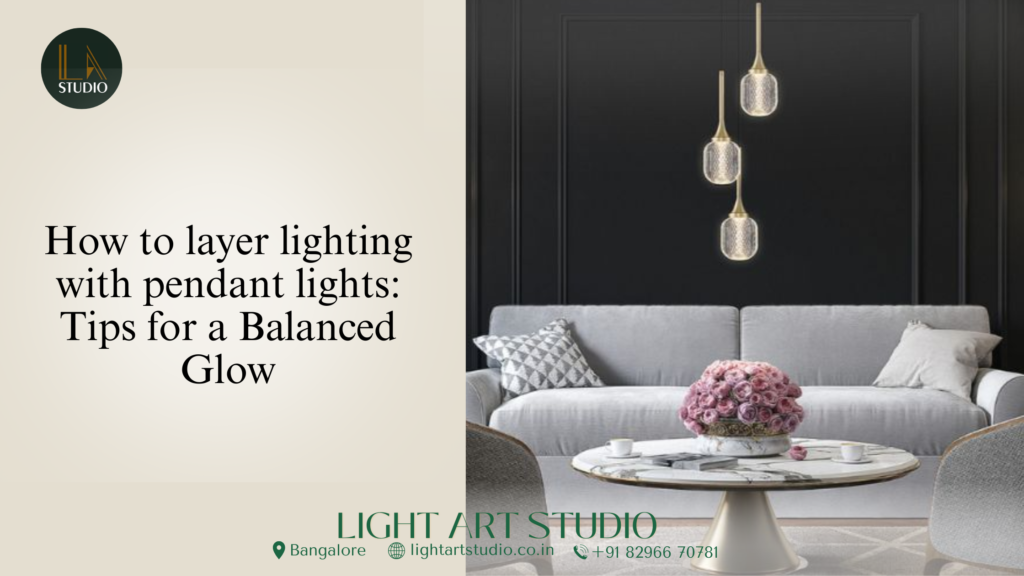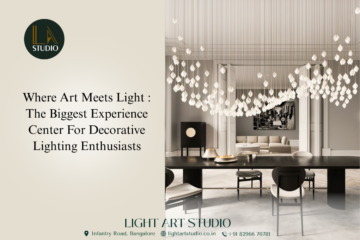
When it comes to transforming the look and feel of your home, pendant lights are a powerful design element that can significantly enhance the overall ambiance. These versatile fixtures are not only practical but also stylish, making them the perfect choice for layering lighting and achieving a balanced glow in any room. In this article, we’ll explore how to effectively use pendant lights as part of a layered lighting scheme that adds depth, dimension, and functionality to your living spaces.
The Importance of Layered Lighting
Layered lighting is an essential design strategy that combines multiple types of lighting to create a cohesive, inviting atmosphere. Instead of relying on a single source of light, layered lighting incorporates ambient, task, and accent lighting to provide both functionality and aesthetic appeal. Pendant lights fit seamlessly into this strategy by offering targeted illumination and visual interest, making them an excellent choice for achieving a well-lit and balanced room.
Start with Ambient Lighting
Ambient lighting forms the foundational layer of any lighting plan. It provides general illumination that ensures the entire space is comfortably lit. Ambient lighting can come from ceiling-mounted fixtures, recessed lighting, or even large chandeliers. In smaller rooms, pendant lights can double as ambient lighting when installed in multiples or clustered arrangements. However, for larger spaces, it’s best to use pendant lights in combination with other light sources to evenly distribute light and avoid dark corners.
Enhance Functionality with Pendant Lights for Task Lighting
Task lighting is essential for performing specific activities such as cooking, reading, or working. Pendant lights excel at providing focused task lighting due to their directional design and adjustable height. In the kitchen, for instance, pendant lights installed above an island or countertop not only enhance visibility for food preparation but also add a stylish focal point. In the dining area, pendant lights can be placed above the table to create a warm, inviting atmosphere during meals. When choosing pendant lights for task lighting, consider fixtures with adjustable arms or dimmable features to customize the intensity and direction of the light.
Use Pendant Lights as Accent Lighting
Accent lighting is used to highlight architectural features, artwork, or decorative elements within a space. Pendant lights can be strategically placed to draw attention to specific areas, such as a reading nook, hallway, or entryway. By choosing pendant lights with unique designs or interesting materials, you can add a touch of personality and visual interest to your home. Accent pendant lights work especially well when paired with wall sconces or floor lamps to create a layered lighting effect that guides the eye and enhances the room’s overall design.
Tips for Layering Lighting with Pendant Lights
To maximize the impact of pendant lights in your layered lighting scheme, keep the following tips in mind:
- Mix Different Light Sources: Combine pendant lights with other fixtures such as recessed lighting, table lamps, and floor lamps to create a dynamic and flexible lighting plan. This approach ensures that no single light source overwhelms the space, resulting in a balanced and comfortable glow.
- Adjust Fixture Height: The height at which you install your pendant lights can greatly affect their functionality and visual appeal. For task lighting above kitchen islands or dining tables, hang pendant lights approximately 30 to 36 inches above the surface for optimal illumination and comfort. For ambient or accent lighting, adjust the height based on the ceiling height and the desired effect.
- Consider Dimmer Switches: Installing dimmer switches for your pendant lights allows you to adjust the brightness levels to suit different activities and moods. Dimmers also help reduce energy consumption and extend the lifespan of your bulbs.
- Coordinate Styles and Finishes: To create a cohesive look, choose pendant lights that complement the existing decor and finishes in your home. Whether your style is modern, rustic, industrial, or traditional, there are pendant light designs that can seamlessly integrate into your space.
- Mind the Bulb Type and Color Temperature: The type of bulb you choose can significantly influence the ambiance of a room. Warm white bulbs (around 2700K to 3000K) create a cozy, inviting atmosphere, while cooler bulbs (3500K to 4000K) are ideal for task-oriented areas like kitchens and home offices.
Conclusion
Layering lighting with pendant lights is an effective way to create a balanced, inviting, and visually dynamic space. By thoughtfully combining ambient, task, and accent lighting, you can transform any room into a well-lit haven that meets both your functional needs and design preferences. Pendant lights, with their versatility and style, play a pivotal role in achieving this layered lighting effect, enhancing the overall aesthetic and comfort of your home.
Whether you’re renovating your kitchen, redesigning your living room, or simply updating your lighting scheme, incorporating pendant lights into your layered lighting plan is a surefire way to achieve a balanced glow that makes every space shine.




